Kids say the darndest things — and sometimes their simple lessons can be applied to our jobs. Market research is one example. This post grew from a conversation I had with SYFT Inc’s Chris Doherty and Jason Galindo when we were working together on a custom market research project for a client. Talk turned to kids — and we came up with our “ask three more” technique. Here’s how it works.
Why is that dog’s tongue purple?
When it comes to using market research to gain consumer insights, people tend to ask the same questions over and over until they get an answer that they like. But refusing to ask new questions because they don’t fit your team’s view of the market could be a big problem. Instead of actionable insights, you’ll probably confirm your existing bias. The end result will be an expensive report you shelve because, well, you knew the answer anyway.
Why do we stop asking questions? Maybe we do already know the answers. Or maybe we only think we know the answers. Or maybe we simply don’t have the time to sit back and ask anymore. Four-year-olds sure have the time, though. Why is the sky blue? How do fish breathe? Where do the people inside the TV live Research on kids and questions has revealed that four-year-old girls ask upwards of 390 questions a day. The average UK mom gets asked a question every 2 minutes and 36 seconds.
These questions are real, they’re random, and they’re born of an innocent curiosity about the world. No agenda. No confirmation bias. (And often, no answer!) And that’s why four-year-olds are our role models when it comes to asking questions.
The value of questions
Continually asking questions often helps us identify what we really know to be true about a brand, marketplace and customer. These truths may be pivotal in gaining the competitive advantages needed for a particular brand to be successful. More importantly, though, the questions can help identify potential gaps in knowledge that may dictate brand success (or failure).
It’s important to employ this approach as much as possible. The marketplace changes quickly, with new products launching, new information coming to light and new approaches and guidelines being put into practice. This can mean the answer to a question you had last quarter might not be the same answer today.
The “ask three more” technique
Chris, Jason and I came up with the “ask three more” technique as a way to resist the temptation to ask questions that will get the answers we expect, and to stop asking when we get the answer that fits with our vision of the world. Instead we want to challenge the status quo. Get the creative juices flowing. And uncover the unexpected.
Here’s how it works. Once you think you’re done asking questions, look at the situation from the perspective of a four-year-old — open-minded, curious and unafraid to wonder about weird stuff — then come up with at least three more questions to ask. Next, answer the questions yourself. Pay attention to your answers. Do you hesitate before you answer? Do you start the answers with “I think”? Do you wish you had someone else to ask? If any of these are true, ask these questions of your market.
Here’s an example. Let’s say you’re doing primary market research as part of a campaign to revamp messaging for an existing direct-to-consumer over-the-counter medication. You’ve got 15 solid questions for your focus group. Good job. Now ask three more. Think like a kid. How about: “Where does this product live?” And, “What hidden talent does this product have?” And, “What do people say behind its back?”
Being able to answer all the questions is not the goal. Being able to confidently answer the right questions, however — those that can have a direct impact on a brand’s performance — is what can ultimately lead to better marketing strategies and tactics.
Do the answers matter? Could they make the difference between good and great for your next campaign? You’ll never know if you don’t ask.
If you’re doing your own consumer insight research, we’ve put together this checklist of must-ask questions.


